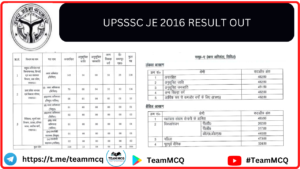Introduction
Testing construction materials is crucial to ensure strength, durability, and safety. Various civil engineering tests help determine the quality of aggregates, concrete, and bricks, ensuring they meet industry standards. In this article, we will explore key material testing methods, their importance, and standard guidelines.
✅ Primary Keywords Used: civil engineering material testing, aggregate testing, concrete tests, brick tests, IS codes for material testing.
✅ Secondary Keywords Used: crushing value test, impact value test, abrasion value test, compressive strength test, flakiness index, non-destructive testing.
Density of Common Civil Engineering Materials
Below is a detailed look at various civil engineering materials and their typical density ranges, which are critical for making informed design decisions:
Natural Building Materials
- Sand (Dry): 1600 – 1800 kg/m³
- Sand (Wet): 1900 – 2100 kg/m³
- Gravel: 1400 – 1700 kg/m³
- Clay: 1600 – 2100 kg/m³
- Limestone: 2400 – 2700 kg/m³
- Granite: 2600 – 2800 kg/m³
- Marble: 2500 – 2700 kg/m³
Bricks and Blocks
- Common Burnt Clay Brick: 1600 – 1900 kg/m³
- Engineering Brick: 1900 – 2100 kg/m³
- Concrete Brick: 1900 – 2400 kg/m³
- Fly Ash Brick: 1700 – 1850 kg/m³
- AAC Block: 550 – 800 kg/m³
Concrete and Cement-Based Materials
- Portland Cement: 1440 kg/m³
- Cement Mortar: 1800 – 2200 kg/m³
- Plain Concrete: 2200 – 2500 kg/m³
- Reinforced Concrete: 2300 – 2600 kg/m³
- Lightweight Concrete: 300 – 1850 kg/m³
Metals and Wood-Based Materials
- Steel: 7850 kg/m³
- Aluminum: 2700 kg/m³
- Copper: 8960 kg/m³
- Softwood (Pine, Cedar): 400 – 700 kg/m³
- Hardwood (Teak, Oak): 600 – 1200 kg/m³
Asphalt and Bituminous Materials
- Asphalt: 1000 – 2400 kg/m³
- Bitumen: 1010 – 1060 kg/m³
Standard Tests of Building Materials
Aggregate Testing in Civil Engineering
- Aggregate Crushing Value (ACV):
- Determines aggregate strength under gradual compressive load.
- A 40-tonne load is applied over 10 minutes.
- Acceptable limits:
- Wearing courses: ≤30%
- Other concrete applications: ≤45%
- Aggregate Impact Value (AIV):
- Assesses resistance to impact forces using 15 hammer blows (14kg from 380mm height).
- Acceptable limits:
- Wearing courses: ≤30%
- Other applications: ≤45%
- Los Angeles Abrasion Value (LAAV):
- Evaluates abrasion resistance using a rotating drum and steel balls.
- Acceptable limits:
- Wearing courses: ≤30%
- Other applications: ≤50%
| Test Name | Purpose | Standard Reference |
| Aggregate Crushing Value (ACV) | Measures resistance to gradual compressive loading | IS 2386 (Part 4), IS 383 |
| Aggregate Impact Value (AIV) | Evaluates resistance to impact forces | IS 2386 (Part 4) |
| Los Angeles Abrasion Value (LAAV) | Assesses resistance to wear and abrasion | IS 2386 (Part 4) |
| Specific Gravity of Aggregates | Determines the density of aggregates relative to water | IS 2386 (Part 3) |
| Flakiness Index | Measures the percentage of thin, flaky particles | IS 2386 (Part 1) |
| Elongation Index | Evaluates elongated aggregate particles | IS 2386 (Part 1) |
Concrete Testing Methods in Civil Engineering
Concrete testing ensures that structural elements meet safety and durability requirements. The most important tests include non-destructive tests (NDT), compressive strength tests, and ultrasonic pulse velocity tests.
- Penetration method
- Rebound hammer method (IS 13311 – Part 2)
- Pull out the test method
- Ultrasonic pulse velocity method (IS 13311 – Part 1)
- Radioactive methods
| Test Name | Purpose | Standard Reference |
| Non-Destructive Tests (NDT) | Evaluates concrete properties without damage | IS 13311 |
| Rebound Hammer Test | Measures surface hardness of concrete | IS 13311 (Part 2) |
| Ultrasonic Pulse Velocity (UPV) | Checks concrete uniformity and detects flaws | IS 13311 (Part 1) |
| Compressive Strength Test | Determines concrete’s load-bearing capacity | IS 516 |
Brief Explanation of Key Tests
- Non-Destructive Tests (NDT):
These tests analyze concrete strength, elasticity, and permeability without damaging the structure. - Rebound Hammer Test:
A hammer is used to measure surface hardness, which correlates with compressive strength. - Ultrasonic Pulse Velocity (UPV) Test:
This method assesses concrete uniformity and detects internal cracks by analyzing ultrasonic wave travel times. - Compressive Strength Test:
Concrete cubes (15cm × 15cm × 15cm) are tested under a gradual load of 140 kg/cm² per minute until failure, providing the compressive strength value at 28 days.
3. Brick Testing in Civil Engineering
Bricks are essential for wall construction, pavements, and structural elements. Proper brick testing ensures they meet strength, durability, and water absorption standards.
| Test Name | Purpose | Standard Reference |
| Absorption Test | Measures water absorption capacity | IS 3495 (Part 2) |
| Soundness Test | Assesses resistance to sudden impacts | IS 3495 (Part 3) |
| Hardness Test | Determines surface strength | IS 3495 (Part 4) |
| Compressive Strength Test | Evaluates the load-bearing capacity of bricks | IS 3495 (Part 1) |
Key Brick Tests Explained
- Absorption Test:
- Determines water absorption by submerging bricks for 24 hours.
- Acceptable limit: ≤20% of dry weight.
- Soundness Test:
- Bricks are struck together to check for a clear ringing sound (indicating no internal cracks).
- Hardness Test:
- Bricks are scratched with a nail or sharp object; no marks indicate good hardness.
- Compressive Strength Test:
- Bricks are tested under axial load until failure.
- Strength is calculated as failure load per unit area.
Conclusion



